Sarah L. Johnson's Blog, page 14
November 4, 2023
Review of Gail Lukasik's gothic mystery The Darkness Surrounds Us, set in early 20th-century northern Michigan
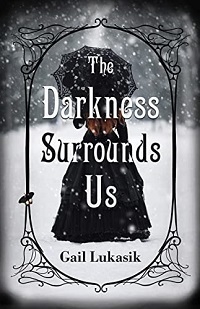 Overly curious. Inquisitive. Too assertive for her own good. These are unwelcome qualities for a woman in late 1918. But Nellie Lester is on a mission, determined to live bravely and uncover her family’s secrets. She narrates this moody gothic novel, the author’s fifth mystery, explaining why she left her post at a contagion ward in Chicago, caring for victims of the Spanish flu, to become the nurse-companion to an expectant wife on a tiny, isolated island in Lake Michigan.
Overly curious. Inquisitive. Too assertive for her own good. These are unwelcome qualities for a woman in late 1918. But Nellie Lester is on a mission, determined to live bravely and uncover her family’s secrets. She narrates this moody gothic novel, the author’s fifth mystery, explaining why she left her post at a contagion ward in Chicago, caring for victims of the Spanish flu, to become the nurse-companion to an expectant wife on a tiny, isolated island in Lake Michigan. Recently, Nellie had found a photograph of herself as a child alongside her late mother and an unknown man, all dressed plainly, labeled “Harmony, Michigan, 1894: Mary, John, and Anna.” Having no memory of the place or the names, Nellie grabs the opportunity to go there herself and search for clues to her past.
But Harmony, as Nellie discovers, was “named for what it wanted to be, not what it was.” Her employer, William Thiery of Ravenwood Manor, is a timber magnate who doesn’t tolerate opposition, and the other residents aren’t much friendlier. For mystery fans who soak up creepy atmosphere, this has it in spades, between Nellie’s spartan turret bedroom, the formidable housekeeper (and her terrible food), and questions about the disappearance of her predecessor, Irene, pointedly described to Nellie as “nosy like you.” Desperate for a friend, Nellie confides in Theo Proctor, a local journalist turned healer, despite not fully trusting him.
In this skillfully plotted novel, Nellie unpicks two mysteries, that of Irene and her mother, which leads her to research a severe religious sect, the Harmonites. The conclusion is hard to guess. Nellie has an incautious streak, and there are few mentions of northern Michigan’s wintry beauty to relieve the grim atmosphere. But this is a solid tale with appeal for fans of Midwestern gothics, like those by Wendy Webb and Jaime Jo Wright.
Gail Lukasik's The Darkness Surrounds Us was published by CamCat Books in September; I reviewed it for November's Historical Novels Review from a pdf copy. I knew the author had written mysteries before, but her work first came to my attention through my interest in genealogy. Her memoir, White Like Her , is an engrossing account of how she discovered that her mother was a Black woman who had secretly passed as white her entire life; I recommend it.
October 31, 2023
Kathleen Kent's The Wolves of Andover offers a suspenseful vision of colonial Massachusetts
 Given its subject, “The Wolves of Andover” is the evocatively perfect title for Kathleen Kent’s second novel, which serves as a prequel to her bestselling debut, The Heretic’s Daughter. It also stands well on its own. The book was released in paperback as The Traitor’s Wife, probably because the original seemed too obscure to non-New Englanders or insufficiently trendy, but I’m glad that my copy reflects the publisher’s initial choice. It was published in 2010, and I finally had the opportunity to dust it off and read it.
Given its subject, “The Wolves of Andover” is the evocatively perfect title for Kathleen Kent’s second novel, which serves as a prequel to her bestselling debut, The Heretic’s Daughter. It also stands well on its own. The book was released in paperback as The Traitor’s Wife, probably because the original seemed too obscure to non-New Englanders or insufficiently trendy, but I’m glad that my copy reflects the publisher’s initial choice. It was published in 2010, and I finally had the opportunity to dust it off and read it. Martha Allen, a young woman in colonial Massachusetts in 1673, has a sharp tongue that discourages potential suitors. In the hopes of getting her married off, her father, a stingy old man from Andover, carts her over to Billerica to place her as a servant to her cousin Patience and her husband, Daniel Taylor, who will be adding a new child to their family soon. Strangely, Martha’s brusque outspokenness doesn’t seem to discourage the curious interest of their farm’s hired man, Thomas Carrier, a tall, taciturn Welshman.
The precariousness of life in Puritan New England is made very clear. Dangers creep in from many sides: the wolves that encroach on the Taylors’ farm at nighttime; the stern admonishments of a local clergyman, with his pronouncements about sin; and for women in particular, the knowledge that they risk their lives with each childbirth. Among the most menacing of threats are four Englishmen sailing from London to hunt down a rogue Puritan soldier who had a hand in executing the late Charles I during the English Civil War… a man rumored to be of great physical stature. The viewpoint shifts between Martha and these pursuers, each vile in his own way, with a few other perspectives emerging to round out the picture. A heads up to the squeamish that there are some violent scenes.
If you’ve read Robert Harris’s recent Act of Oblivion (I haven’t yet), you’ll be familiar with this little-known link between England and its American colonies: the transatlantic pursuit of the men responsible for Charles I’s death after his son gains the throne. Dark and haunting, The Wolves of Andover adds to the historical picture, showing not only the suspenseful chase but also how the so-called regicides remain concealed among their fellow Puritans. On top of that, the novel gives us a tender love story based in history (both Martha and Thomas once lived), and rooted in mutual respect and acceptance.
The Wolves of Andover was published by Reagan Arthur Books/Little Brown in 2010.
October 25, 2023
An ailing Jane Austen takes one last case in Stephanie Barron's Jane and the Final Mystery
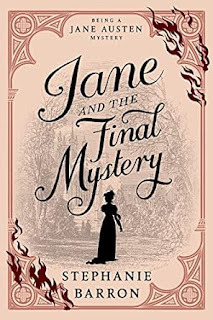 Historical mysteries in which famous people transform into amateur detectives can be minefields for their authors. If the protagonist’s personality drifts from the recorded reality, readers will get cranky, since the illusion that fiction provides will be broken.
Historical mysteries in which famous people transform into amateur detectives can be minefields for their authors. If the protagonist’s personality drifts from the recorded reality, readers will get cranky, since the illusion that fiction provides will be broken. The background details should be faithfully re-created and, for literary sleuths, their narration and dialogue should plausibly reflect their actual writings. Bonus points if the invented mystery scenarios feel neatly enfolded into settings or situations the starring character would have – or could have – personally encountered.
The successful execution of all these precepts has made Stephanie Barron’s Jane Austen Mysteries such a winning series, of which we’ve now arrived – alas! – at the fifteenth and last volume. The historic Austen didn’t really solve mysteries, but with the workings of her ever-agile mind on each case, Barron has us willingly accepting the fictional premise that she could have.
Once past the scene-setting prologue, we’re at Jane’s home of Chawton Cottage, Hampshire, in late March 1817 – and anyone aware of her historical biography will know the sad truth that the esteemed author hasn’t much time left. Still, as she says, “I refuse to spend my final months in a fog of benign stupidity,” refusing to take laudanum so her mind will remain sharp.
 author Stephanie Barron
author Stephanie BarronWhen Jane’s favorite nephew, Edward, receives an alarming letter from his friend William Heathcote, son of her friend Elizabeth, Jane willingly boards a pony trap to Winchester with Edward to see how she can help. A fifteen-year-old boarding school pupil who’s been bullied for his stutter, William is seemingly being framed for the drowning of a fellow student at Winchester College, one with a reputation for cruelty. William’s baffling refusal to supply an alibi for the time of death hinders his family’s and friends’ pursuit of justice.
Investigating the mystery gets Jane and her readers immersed in the dangerous rivalries and arcane rituals and in-jokes of a British boys’ boarding school, as well as some courtroom drama – complicated by the fact most potential witnesses are on holiday and absent. In this environment and Jane’s wider social world, social class and money underlie many relationships, realistically reflecting the time and place (and the environs of Austen’s own novels).
In the background, with the recent passing of Jane’s uncle, James Leigh-Perrot, she and her widowed mother await news of a potential inheritance. Jane’s concerns for her family’s financial future, as she reflects on her own ill health, lend even more emotion to this final volume of her fictional adventures, which is well worth reading – regardless of whether you’re a longtime fan or a newcomer to the series.
Jane and the Final Mystery is published by Soho Crime this month; purchasing details below.
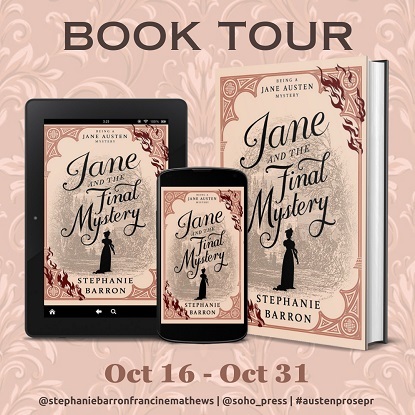
PURCHASE LINKS
AMAZON BARNES& NOBLE | PUBLISHER| BOOKSHOP | GOODREADS
AUTHOR BIO
StephanieBarron is a graduate of Princeton and Stanford, where she received herMasters in History as an Andrew W. Mellon Foundation Fellow in the Humanities. Hernovel, That Churchill Woman (Ballantine, January 22, 2019) traces the turbulentcareer of Jennie Jerome, Winston Churchill's captivating American mother.Barron is perhaps best known for the critically acclaimed Jane Austen MysterySeries, in which the intrepid and witty author of Pride and Prejudice detailsher secret detective career in Regency England. A former intelligence analystfor the CIA, Stephanie—who also writes under the name Francine Mathews—drew onher experience in the field of espionage for such novels as Jack 1939, whichThe New Yorker described as "the most deliciously high-concept thrillerimaginable." She lives and works in Denver, CO.
WEBSITE | FACEBOOK | INSTAGRAM | PINTEREST | BOOKBUB |
October 13, 2023
Rachel Eliza Griffiths' debut, Promise, tells the story of two Black sisters in Civil Rights-era Maine
 A searing account of how racism reaches its long arm into all corners of American life, Griffiths’ first novel also honors the love cradled within Black families and how it grants them inner strength and the power of defiance.
A searing account of how racism reaches its long arm into all corners of American life, Griffiths’ first novel also honors the love cradled within Black families and how it grants them inner strength and the power of defiance. Promise opens with glorious scenes of a late summer idyll in coastal New England in 1957. It’s the day before school begins in Salt Point, Maine, and Hyacinth “Cinthy” Kindred and her sister Ezra, thirteen and fifteen, are becoming young women, which their devoted parents, Heron and Lena, realize will make the world look at them differently. Ezra’s best friend Ruby Scaggs, a poor white neighbor whose father beats her, refuses to acknowledge their differences, but Ezra knows their closeness will soon run its course. The world is too much with them.
Within a week, life turns threatening. Cinthy’s favorite teacher commits suicide and is replaced by a snooty bigot. Ruby makes an unforgiveable mistake. The Kindreds’ good friends, the Junketts – the only other Black family nearby – are terrorized by a white police deputy. President Eisenhower has just signed the Civil Rights Act, and repercussions bubble forth.
Realizing he can no longer shelter his daughters as he’d prefer, Heron reveals the personal and ancestral tragedies that spurred his move from Delaware to the isolated north, a supposedly safer place. Cinthy and Ezra must decide how to react to it all.
Promise holds nothing back in terms of circumstance, language, and emotion, creating a hard-hitting read that compels with its fully fleshed-out characters: Black and white, old and young. Griffiths’ background as a multi-published poet shows in many quote-worthy lines (“To claim herself was the sweetest and most dangerous theft”), and the ending, full of sadness and triumph, sings like an invocation. An assured debut about generational trauma, finding home, and the importance of nourishing joy.
Promise was published by Random House (US) in July, and I reviewed it initially for the Historical Novels Review. Read more about the novel and its beautiful cover (with art by Megan Gabrielle Harris) at LitHub. In the UK, the publisher is John Murray.
October 9, 2023
The Time It Takes, a guest post by Jessica McCann, author of Bitter Thaw (plus US giveaway)
~
The Time It TakesBy Jessica McCann
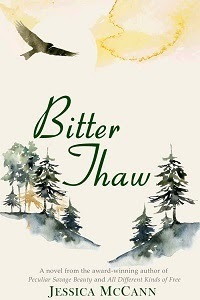 “How long does it take you to write a novel?” It’s one of the most frequent questions I’m asked. Yet, I struggle for the answer every time. When does the clock begin ticking? When research commences? When the first sentence is written? Or, perhaps, when the first blur of a story idea clicks into focus?
“How long does it take you to write a novel?” It’s one of the most frequent questions I’m asked. Yet, I struggle for the answer every time. When does the clock begin ticking? When research commences? When the first sentence is written? Or, perhaps, when the first blur of a story idea clicks into focus?There’s a thick manila file folder in my office with bits and pieces that catch my eye from one day to the next – pages torn from magazines, quotes jotted down while watching TV or reading a book, articles printed from the Internet. Every so often I peruse the file and see how these random snippets may fit together or spark an idea with enough depth to become a novel. I can spend months, even years, ruminating before the final snippet falls into place and inspiration strikes.
Case in point: the conception of my historical novel, Bitter Thaw.
In 2013, I came across a news article about members of a prison work crew who dove into a cold, fast-moving river to rescue three young brothers whose canoe had capsized. When asked by the reporter why they’d risked their lives to save the boys, inmate Jon Fowler said, “You see three helpless kids in a river, you help. Just because we’re incarcerated, doesn’t mean we’re bad people.” That brief news piece – and Fowler’s quote in particular – grabbed me. I wanted to know more. What crimes had those men committed? Why was it the inmates who jumped in to rescue the boys, and not the correctional officers on the scene? I printed the article and tucked it into my idea folder.
About a year later, I read a news piece about authorities in California hoping to solve a 25-year-old murder. They shared a photo of the quilt found with the body of woman who had been strangled. The hope was that someone might be able to identify the owner or maker of the quilt and provide a break in the cold case.
Then, in 2017, I read a National Geographic article about the five coldest rivers on earth. Among them was the Rainy River, which runs through the rugged wilderness along the Canadian and U.S. border in Minnesota. I live in Phoenix, one of the hottest places on earth (our average daily temperature this summer was 100 degrees). So, I was intrigued by a place where the “warm season” of mid-May to mid-September has an average daily temperature of 65 degrees.
One afternoon, while flipping through these articles and other snippets in my idea folder, my mind suddenly clicked… on the ability and motivations of people who keep secrets for decades, the love represented by a handmade quilt, the primal instinct of a convicted criminal to risk his life to save a child, the way lives often intersect in unexpected ways, and the untold stories behind them all. In a matter of minutes – after years of thinking – the characters, setting, hook, and title of a novel snapped together in my mind.
Bitter Thaw: Fresh news of the cold case reopens old wounds for an Arizona family, from a time when gender stereotypes, racial bigotry, and small-town gossip led to tragedy. Now, three generations – a mother, son, and granddaughter – embark on a cross-country journey home, in a search for truth and a hope of redemption.
Then began the research – on Minnesota’s social and geological history, on the correctional system and small-town law enforcement, on the psychology of secrets and false memories, and so much more. Character sketches. Potential themes. Key plotlines. Creation of a fictional small town, Bitter Rapids, where the bulk of the story would take place.
I chose the year 1990 for the family to make their cross-country journey because, while it’s in the modern era, it was still a time before online maps, GPS, and smartphones became the norm. With 1990 as my starting point, I used my remedial math skills to move backward, calculating the ages of my characters and factoring in key historical events that would add context to their stories.Finally, sometime in 2018, I began to write. I wrote, revised, and researched some more – a circular process that spanned about three years. That’s when the serious revisions began on the completed manuscript.
Bitter Thaw will hit bookstore shelves on October 23, 2023 – roughly a decade after an article about a prison work crew first tickled my imagination. So, what’s the best answer to, “How long does it take you to write a novel?”
 author Jessica McCannAbout the Author: Jessica McCann has worked for 35 years as a professional freelance writer, journalist, and creative nonfiction author. Her historical novels have won the Freedom in Fiction Prize and Arizona Book of the Year, as well as being shortlisted for numerous literary awards, including the international Rubery Book Award. Bitter Thaw is her third novel. Jessica enjoys connecting with readers and writers.
author Jessica McCannAbout the Author: Jessica McCann has worked for 35 years as a professional freelance writer, journalist, and creative nonfiction author. Her historical novels have won the Freedom in Fiction Prize and Arizona Book of the Year, as well as being shortlisted for numerous literary awards, including the international Rubery Book Award. Bitter Thaw is her third novel. Jessica enjoys connecting with readers and writers. Find her online: www.jessicamccann.com, @JMcCannWriter (Twitter/X, Instagram, TikTok), @jessicamccannnovels (Facebook and YouTube)
Bitter Thaw
Minnesota, 1956: Unknown human remains are discovered deep within the mosaic of rugged forests and interconnected waterways once home to the native Ojibwe people.
More than 30 years later, fresh news of the cold case reopens old wounds for an Arizona family, from a time when gender stereotypes, racial bigotry, and small-town gossip led to tragedy. Now, three generations – a mother, son, and granddaughter – embark on a cross-country journey in a search for truth and a hope of redemption.
As long-buried secrets are unearthed, they each begin to question their memories, motives, and basic notions of good and evil.
You can pre-order your copy today:
https://www.amazon.com/Bitter-Thaw-Jessica-McCann/dp/0999460277
https://www.barnesandnoble.com/w/bitter-thaw-jessica-mccann/1143834520
https://bookshop.org/a/5554/9780999460276
Fill out the form below, and you’ll be entered in a giveaway for a signed advance reader copy of Bitter Thaw (US only). Please share your thoughts in the blog comments for an additional entry. Deadline Monday, October 16th.
Loading…
October 3, 2023
Why "who" is so important in historical fiction, a guest essay by Susanne Dunlap
~
Why Who Is So Important in Historical Fiction Susanne Dunlap
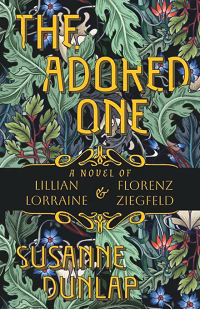 All the choices we make as writers when crafting a novel are important: where to start the story, what kind of a story to tell, the style, the pace, etc. etc. But in historical fiction, there’s one choice that underpins all the others, that influences every other choice along the way. That is, simply, will your protagonist be historical or invented—a question that doesn’t arise in any other category of fiction.
All the choices we make as writers when crafting a novel are important: where to start the story, what kind of a story to tell, the style, the pace, etc. etc. But in historical fiction, there’s one choice that underpins all the others, that influences every other choice along the way. That is, simply, will your protagonist be historical or invented—a question that doesn’t arise in any other category of fiction. I will be the first to admit that I approach having a historical protagonist with some trepidation for one reason: Real life doesn’t arrange itself in satisfying story arcs, and finding an arc within an actual human being’s existence can be a stretch.
Why does that matter? When it comes to writing fiction, the arc—at least in the western European tradition—is fundamental. Your protagonist has to start out as one person with one set of beliefs and ambitions and problems and be changed through the events of the novel to become something wiser, better, in some cases worse—or someone who finally has the ability to overcome certain obstacles. It’s possible to build a story around a protagonist who doesn’t do any of this, but very risky if you want to keep a reader caring about the story and turning the pages.
The Adored One is my fourteenth published historical novel, but it’s only the third I’ve written featuring a historical protagonist.
The first was Anastasia’s Secret, which came out in 2010. Twelve years later I published The Portraitist, about the French 18th-century artist, Adélaïde Labille-Guiard.
The protagonist of The Adored One—Lillian Lorraine, the love of producer Florenz Ziegfeld’s life—is historical too. Not only that, but with few exceptions, all the characters in the novel lived, and every event actually happened. But you’ve probably never heard of Lillian, correct? So why did I choose to write about her?
Lillian Lorraine was a rock star in her time. As a performer whose looks were her stock in trade, her image graced magazines and sheet music covers, and her antics fed the hunger for sensational news stories. When she outgrew her early stardom, she faded away from the public eye—as so often happens with women entertainers.
Thus the image of Lillian that has come down to posterity is that of a ditzy, thoughtless ingenue who wrecked her own life. But what about the world she existed in? How did those expectations shape her?
Lillian went on stage for the first time when she was four years old. Her ambitious mother pushed her and dragged her around the country—something that wasn’t very conducive to a well-rounded education.
She rocketed to stardom at the age of 16, and soon after was bedded and controlled by one of the most powerful figures on the Broadway stage of the early 20th century. A lot for a teenager of any period to handle.
 author Susanne Dunlap
author Susanne DunlapShe fell in and out of love, got involved with the bad boys, experienced the underbelly of early 20th-century New York City. She drank all night, came late to rehearsals, and made her share of enemies. Her mother’s death when she was still a teen left her alone and unprotected.
She also made the switch to Vaudeville when she was blacklisted by Abe Erlanger—and loved it there.
While on Vaudeville she worked on the side with Alice Guy Blaché—a pioneering woman filmmaker—and Lillian is also credited with directing some early films after she made the move to Hollywood.
She became a close friend of Bert Williams, the first Black man allowed to perform on Broadway.
In fact, Lillian had many loyal friends. Throughout her life, she did all she could to help friends in need, and even remained on good terms with Ziegfeld until his death.
Yet Lillian refused Ziegfeld’s offers of marriage not once or twice, but four times. She said no to one of the most powerful men in show business before she was even twenty years old. Marrying him would have assured her a comfortable and safe life. Why didn’t she want that?
This was just one of the questions that intrigued me about Lillian, and led me to believe she had hidden depths and reserves of strength.
The Adored One takes place from 1906 to 1913, from when Lillian and her stage mother arrived in New York until she finally split from Ziegfeld at a New Year's Eve party. That allowed me to trace the arc that took her from naïve teenager to young woman fully in control of her own destiny. It enabled me to show her many mistakes and missteps, but also her growth.
Because the image of Lillian that has come down through history illustrates, for me, the way stories have been written by the powerful men in any sphere. Biographical historical fiction provides an opportunity to explore lesser-known individuals who had roles to play in history, whose contributions in their sphere deserve to be better known, but who were ignored—or whose contributions were distorted—by those powerful men.
Today’s historical fiction has broadened and deepened our understanding of the past by exploring the interstices, daring to investigate what might have been but isn’t in the historical record, resurrecting forgotten individuals whose stories are engaging and inspiring.
That’s why who is such an important question to ask before writing a historical novel. It’s tied closely not only to the research you’ll do, but to your intentions as a novelist.
I hope readers of The Adored One not only enjoy learning about and being entertained by the wild and crazy world of the early Ziegfeld Follies, but also fall in love with Lillian Lorraine the way I did. Like so many other forgotten women, she deserves a chance.
~
Susanne Dunlap is the author more than a dozen historical novels for adults and teens. Her work has won and been nominated for many awards, including the Bank Street Books Children’s Book of the Year, the Utah Book Award, and the Missouri Gateway Readers’ Prize. Most recently, her novel The Portraitist won its category in the Eric Hoffer Book Awards, and The Paris Affair won first place in the CIBA Dante Rossetti awards for Young Adult Fiction. Susanne earned her PhD in music history from Yale, and her BA and MA (musicology) from Smith College. She lives and writes in Biddeford, Maine.
September 30, 2023
A dozen intriguing historical novels published in fall 2023
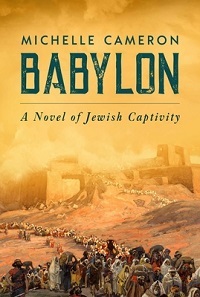 Michelle Cameron's Babylon, her third historical novel, is a multigenerational saga focusing on one woman of the Judean people, Sarah, exiled from Jerusalem and held in captivity in Babylon in the sixth century BCE. I've enjoyed the author's previous two historicals, and this one promises a setting rarely covered in fiction. Wicked Son, September 2023. [see on Goodreads]
Michelle Cameron's Babylon, her third historical novel, is a multigenerational saga focusing on one woman of the Judean people, Sarah, exiled from Jerusalem and held in captivity in Babylon in the sixth century BCE. I've enjoyed the author's previous two historicals, and this one promises a setting rarely covered in fiction. Wicked Son, September 2023. [see on Goodreads]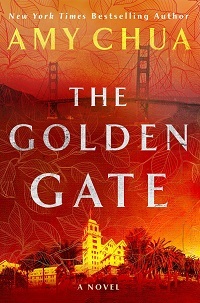 Amy Chua's first novel is a historical thriller set in California's Bay Area during WWII, involving the backdrop to a Presidential candidate's assassination, a mystery involving a wealthy family, and the complex social and racial environment at the time. Minotaur, September 2023. [see on Goodreads]
Amy Chua's first novel is a historical thriller set in California's Bay Area during WWII, involving the backdrop to a Presidential candidate's assassination, a mystery involving a wealthy family, and the complex social and racial environment at the time. Minotaur, September 2023. [see on Goodreads]
Ulysses S. Grant, America's 18th President, looks back on his eventful life, long marriage, and evolving moral code in this multifaceted literary novel, which I loved (review to come). Atria, November 2023. [see on Goodreads]
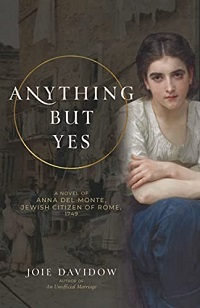 Joie Davidow's (see
An Unofficial Marriage
, 2021) latest novel is subtitled "A Novel of Anna Del Monte, Jewish Citizen of Rome, 1749." It relates the true story of Anna, a young Roman Jewish woman, who was held captive in a convent while being pressured to convert to Catholicism; she kept a diary of her experiences. Monkfish, October 2023. [see on Goodreads]
Joie Davidow's (see
An Unofficial Marriage
, 2021) latest novel is subtitled "A Novel of Anna Del Monte, Jewish Citizen of Rome, 1749." It relates the true story of Anna, a young Roman Jewish woman, who was held captive in a convent while being pressured to convert to Catholicism; she kept a diary of her experiences. Monkfish, October 2023. [see on Goodreads]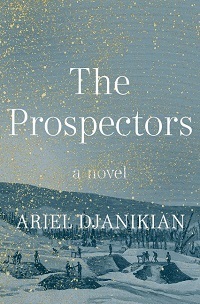 The Yukon Gold Rush looms large in both timelines (19th century and 2015) about a young woman who sees her family become immensely wealthy from mining operations, and her 21st-century descendant, who seeks to right the wrongs her ancestors created by acknowledging the pain caused to the First Nations people a century earlier and establishing restitution. William Morrow, October 2023. [see on Goodreads]
The Yukon Gold Rush looms large in both timelines (19th century and 2015) about a young woman who sees her family become immensely wealthy from mining operations, and her 21st-century descendant, who seeks to right the wrongs her ancestors created by acknowledging the pain caused to the First Nations people a century earlier and establishing restitution. William Morrow, October 2023. [see on Goodreads]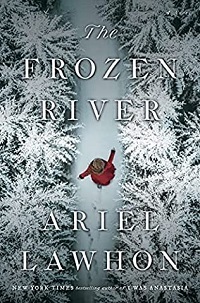 Martha Ballard, a historical woman who kept a daily journal about her household duties and midwifery practice, narrates this entrancing tale of murder and the difficult quest for justice in late 18th-century Maine; review to come. Doubleday, November 2023. [see on Goodreads]
Martha Ballard, a historical woman who kept a daily journal about her household duties and midwifery practice, narrates this entrancing tale of murder and the difficult quest for justice in late 18th-century Maine; review to come. Doubleday, November 2023. [see on Goodreads] The glamorous business rivals in Paul's latest atmospheric novel are cosmetic entrepreneurs Helena Rubenstein and Elizabeth Arden, millionaires determined to succeed and triumph over the other in their quest to enhance female beauty. William Morrow, September 2023. [see on Goodreads]
The glamorous business rivals in Paul's latest atmospheric novel are cosmetic entrepreneurs Helena Rubenstein and Elizabeth Arden, millionaires determined to succeed and triumph over the other in their quest to enhance female beauty. William Morrow, September 2023. [see on Goodreads] Literary fiction set in early 1950s Appalachia, at the time of the Korean War, and focusing on the state of being an outsider in a small community, the demands of family, friendship, and love. Doubleday, September 2023. [see on Goodreads]
Literary fiction set in early 1950s Appalachia, at the time of the Korean War, and focusing on the state of being an outsider in a small community, the demands of family, friendship, and love. Doubleday, September 2023. [see on Goodreads]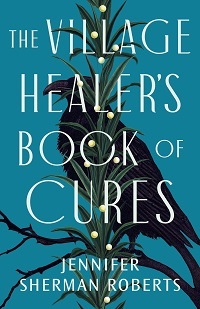 A traditional healer, or "cunning woman," in a 17th-century English village channels her true power after her skills attract the negative attention of witchfinder Matthew Hopkins, and a man dies mysteriously. This suspenseful historical novel has overtones of mystery and is written by an author with a PhD in Renaissance literature. Lake Union, November 2023. [see on Goodreads]
A traditional healer, or "cunning woman," in a 17th-century English village channels her true power after her skills attract the negative attention of witchfinder Matthew Hopkins, and a man dies mysteriously. This suspenseful historical novel has overtones of mystery and is written by an author with a PhD in Renaissance literature. Lake Union, November 2023. [see on Goodreads]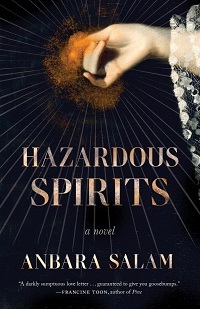
Life for a young housewife in early 20th-century Scotland suddenly becomes more intriguing and uneasy when her husband tells her he can communicate with the spirit world. Is it true? Tin House, October 2023. [see on Goodreads]
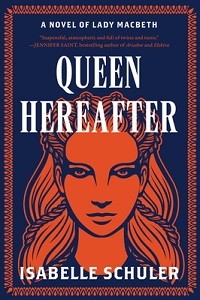 You might guess the subject of this biographical novel from the title: the bold and determined Gruoch, better known as Lady Macbeth, a historical woman from the 11th century. Harper Perennial, October 2023. The UK title is Lady MacBethad. [See on Goodreads]
You might guess the subject of this biographical novel from the title: the bold and determined Gruoch, better known as Lady Macbeth, a historical woman from the 11th century. Harper Perennial, October 2023. The UK title is Lady MacBethad. [See on Goodreads] Zadie Smith's first historical novel centers on the nature of authenticity vs. pretense via the intertwined stories of real people and events from 19th-century Britain: Mrs. Eliza Touchet, longtime housekeeper to author William Harrison Ainsworth, and the infamous court case involving the "Tichborne claimant," in which a man purported to be the lost heir to a vast estate. Penguin Press, September 2023. [see on Goodreads]
Zadie Smith's first historical novel centers on the nature of authenticity vs. pretense via the intertwined stories of real people and events from 19th-century Britain: Mrs. Eliza Touchet, longtime housekeeper to author William Harrison Ainsworth, and the infamous court case involving the "Tichborne claimant," in which a man purported to be the lost heir to a vast estate. Penguin Press, September 2023. [see on Goodreads]
September 21, 2023
Chris Nickson wraps up his Tom Harper series with a tightly woven novel of post-WWI Leeds
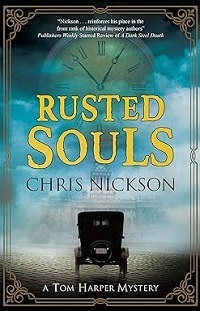 Chris Nickson brings his Tom Harper series to a satisfying, very moving close in this 11th in the series, which has followed his protagonist, his family, and fellow policemen from late Victorian times to the post-WWI era. But even if this is your first acquaintance with the recurring cast, you won’t be lost. Everyone’s role is made clear by way of deep characterizations and sufficient backstory.
Chris Nickson brings his Tom Harper series to a satisfying, very moving close in this 11th in the series, which has followed his protagonist, his family, and fellow policemen from late Victorian times to the post-WWI era. But even if this is your first acquaintance with the recurring cast, you won’t be lost. Everyone’s role is made clear by way of deep characterizations and sufficient backstory. In March 1920, Harper, Chief Constable of Leeds City Police, approaches the future with guarded optimism. The Great War is over, although memories of the countless losses and suffering remain fresh. Likewise, the presence of fewer gauze masks indicates that Spanish flu cases are dropping. After a distinguished forty-year career that saw him rise to the top rank in his profession, retirement is in sight, a mere six weeks away. But getting there won’t be easy. In fact, it becomes a personal and professional mission for Harper to wrap up three brand new, unlinked cases before he exits his Town Hall office for good.
The first crime is one he needs to keep secret: Alderman Thompson, the city council head who’d recommended Harper for his current post, is in hot water after letting himself be “distracted by a lass” and getting blackmailed for the indiscreet love letters he wrote her, which were subsequently stolen. As Harper arranges to talk with Thompson’s former mistress, a new mystery lands: an elusive team of thieves holding up jewelry stores. Lastly, police in other cities are troubled by organized groups of female pickpockets wreaking havoc on local businesses, and word is that they’re heading for Leeds soon. At home, Harper’s wife, Annabelle, is sinking progressively deeper into senility; on good days, she speaks with him, and her original personality briefly surfaces. Other times, she remains silently lost in her own world.
There are multiple cases to untangle alongside the wrapping-up of character arcs, and no words are wasted in the process. The suspense revs up throughout, keeping readers guessing about what will happen next with each case. Alongside the tight plot, we get immersed in the postwar atmosphere of Leeds. Harper’s daughter, Mary, who lost her fiancé overseas, has a close bond with her father – they meet for lunch regularly – and is working through her feelings of loss, planning a visit to the battlefield while choosing to dress again in brighter colors. Nickson’s portrait of Annabelle’s dementia is entirely realistic and affecting, as is Tom’s emotional reaction to the heartbreaking changes he sees in his beloved partner.
This novel is highly recommended, though if you wish to start at the very beginning of Tom’s story, pick up volume 1, Gods of Gold.
Rusted Souls appears from Severn House this month; I reviewed it from a NetGalley copy.
September 18, 2023
Night Watch by Jayne Anne Phillips offers a unique take on recovery from the U.S. Civil War
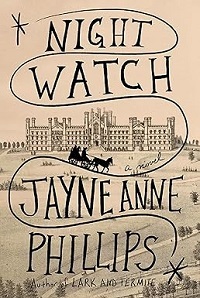 Phillips (Quiet Dell, 2013) excels in crafting original takes on human circumstances, like mother-daughter relationships and women’s vulnerabilities and resilience. Her setting here is equally striking: the Trans-Allegheny Lunatic Asylum in rural West Virginia.
Phillips (Quiet Dell, 2013) excels in crafting original takes on human circumstances, like mother-daughter relationships and women’s vulnerabilities and resilience. Her setting here is equally striking: the Trans-Allegheny Lunatic Asylum in rural West Virginia. In 1874, 12-year-old ConaLee and her mother, Eliza, whom trauma has rendered mute, are dropped off there by a man ConaLee calls Papa, although he isn’t her father. They are brought inside by the night watchman, one of many characters with a hidden past.
Contrary to reader expectations, the facility (an actual place) provides humane treatment for mental illness. Posing as her mother’s maid, ConaLee sees her make improvements under the compassionate doctor’s care.
The story unflinchingly reveals the tragedy that befell them after Eliza’s husband never returned from the Civil War, and how a wandering con man invaded their isolated mountain sanctuary. We also learn about Eliza’s and her husband’s origins. From vivid battle scenes to the asylum’s social refinements, the historical milieu comes alive in all its facets as Phillips evokes the enduring bonds of both blood and chosen families.
Night Watch is published by Knopf on September 19th; I wrote this review for Booklist's July 2023 issue. The novel was recently longlisted for the National Book Award in Fiction. I first read Jayne Anne Phillips's work as a judge for the first Massachusetts Book Award in 2001; her novel Motherkind (not historical fiction) was the winner that year.
Want to read more about the history of the Trans-Allegheny Lunatic Asylum? If you visit in person, you can attend a historic/heritage tour or a ghost tour of the site.
September 11, 2023
Katharine Beutner's Alcestis puts a feminist spin on the tale of a princess from ancient Greek myth
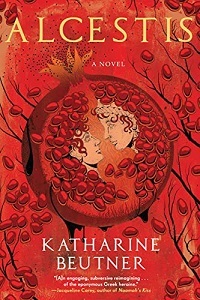 In Greek mythology, Alcestis is known for her great love for her husband, choosing to take his place when death came for him. Her story isn’t one I knew before, though my ignorance didn’t prevent my enjoyment of Katharine Beutner’s feminist retelling.
In Greek mythology, Alcestis is known for her great love for her husband, choosing to take his place when death came for him. Her story isn’t one I knew before, though my ignorance didn’t prevent my enjoyment of Katharine Beutner’s feminist retelling. Alcestis mixes elements of Mycenaean culture with the fantastic in its sensitive portrait of a woman too rarely given credit for her heroism.
Alcestis, the youngest daughter of the King of Iolcus, comes into the world as her mother dies. Neglected by her father, she forms a tight bond with her next oldest sister, Hippothoe, a sickly girl who dies young. Alcestis never gets over the loss. She hopes for better things from her marriage to Admetus, King of Pherae, especially since he invokes the help of Apollo in his desire to win her hand, but the reality of their union proves disappointing.
Reimaginings of old stories continue to gain reader interest, and this one certainly leaves room for imaginative interpretation. How did Alcestis spend those three days in the underworld, anyway? In Beutner’s version, it’s not devotion to her husband that prompts her choice but a yearning to reunite with her beloved sister and the desire to avoid shame.
The novel’s first half reads like a traditional retelling, though one enhanced with well-placed details on ancient Greek customs and rituals and the occasional presence of capricious gods. When Alcestis arrives in the underworld, however, her journey becomes truly otherworldly. In this seasonless place of shifting landscapes, thousands of shades are condemned to perpetual wandering, their dull, gray faces displaying their fading memories of their former lives.
Alcestis is the granddaughter of Poseidon – only two generations separate her from divinity – though only in the underworld does she discover the truth behind myths she’d grown up believing, and the feminine power she never knew she possessed. She also falls in love with the goddess Persephone, raising questions about whether a divine creature is truly capable of such a human emotion. The tale is rendered with strength and delicacy, a rare combination of qualities also found in Alcestis herself.
Alcestis, Beutner's debut novel, was originally published in 2010, and I read it from my own copy. With myth-based historicals proving so popular, the time is right for a re-release; it also has a brand new cover. The author's second novel, Killingly, about a real-life unsolved crime from late 19th-century New England, was published in June, and I hope to read it in the coming months.



